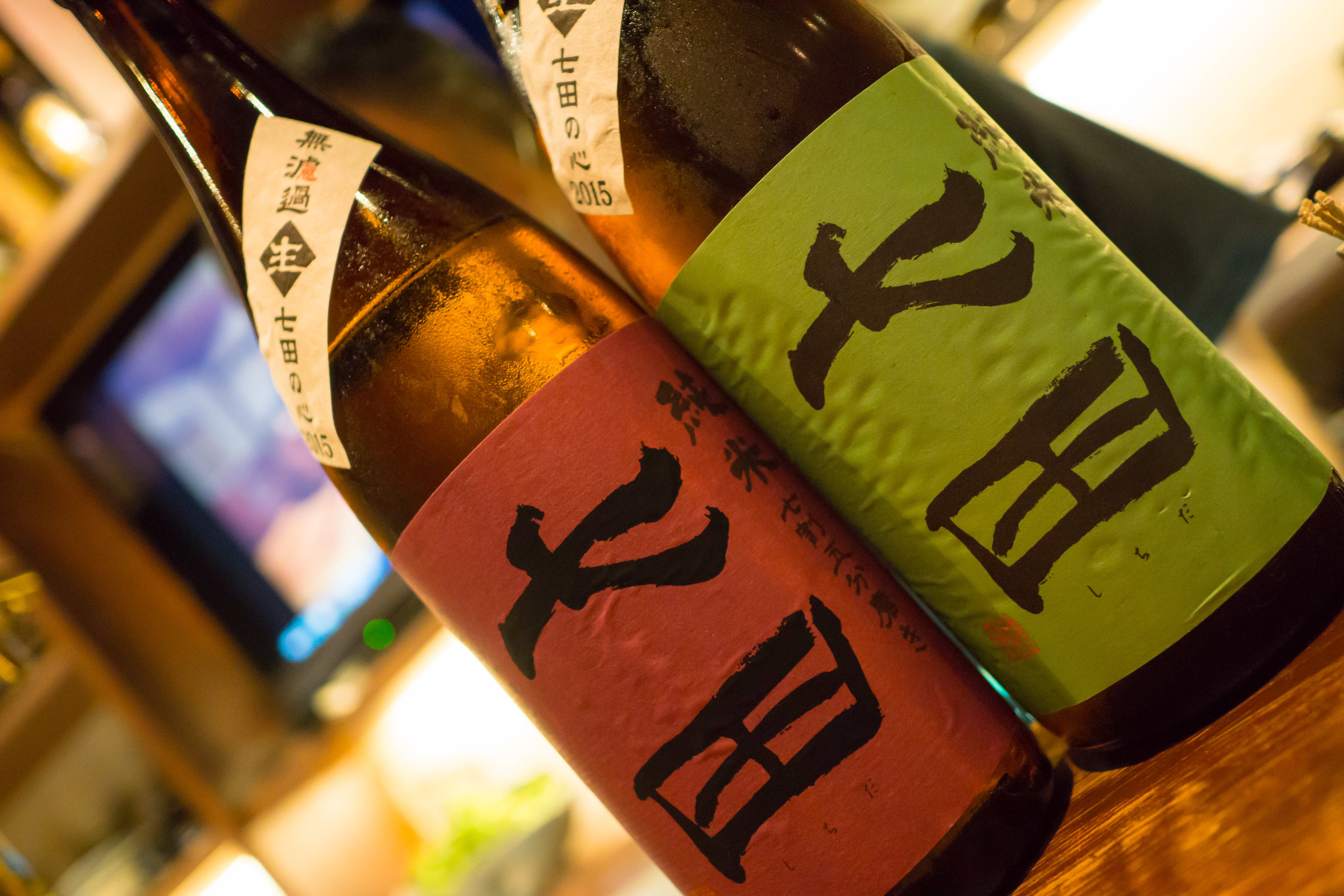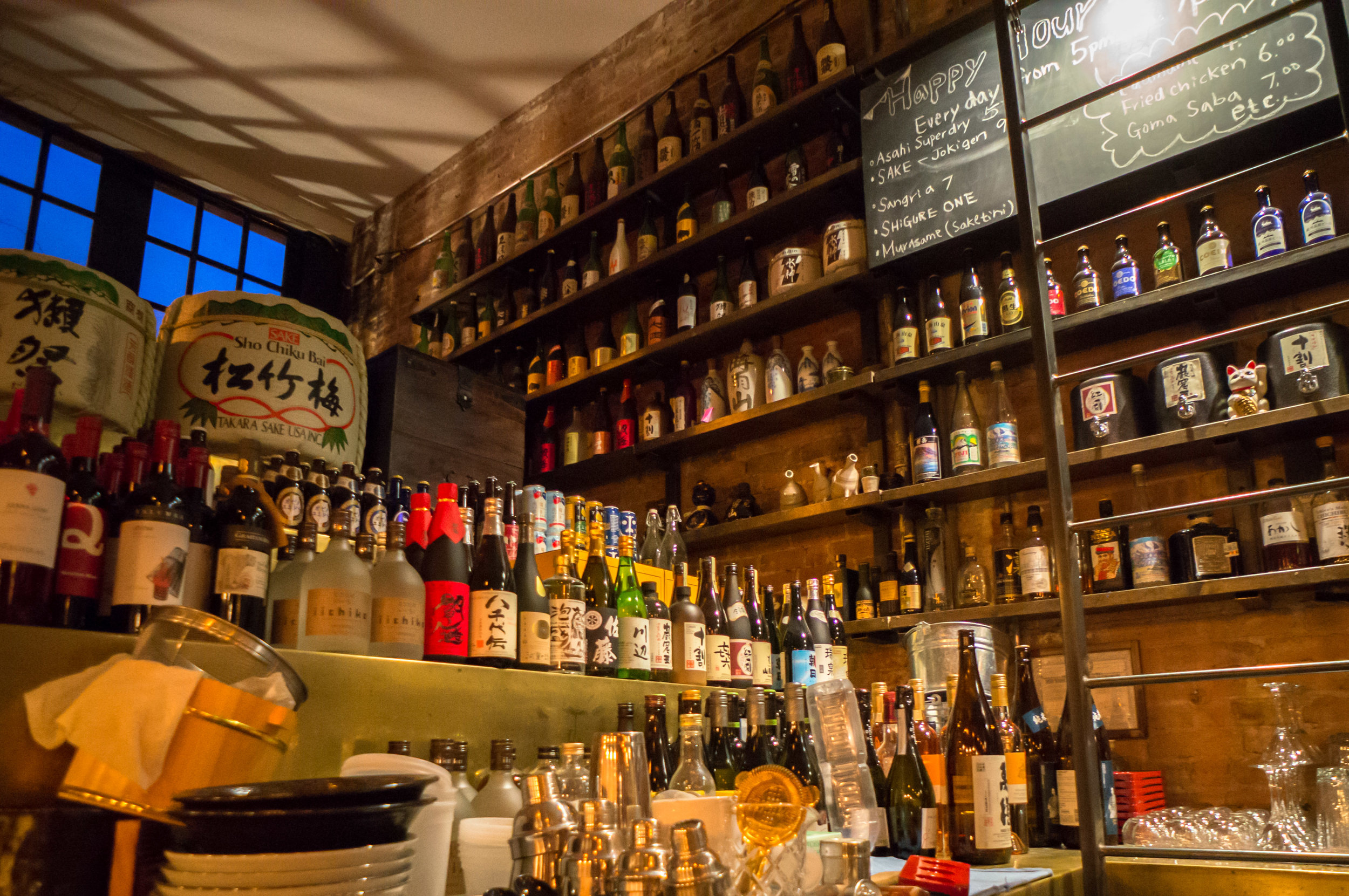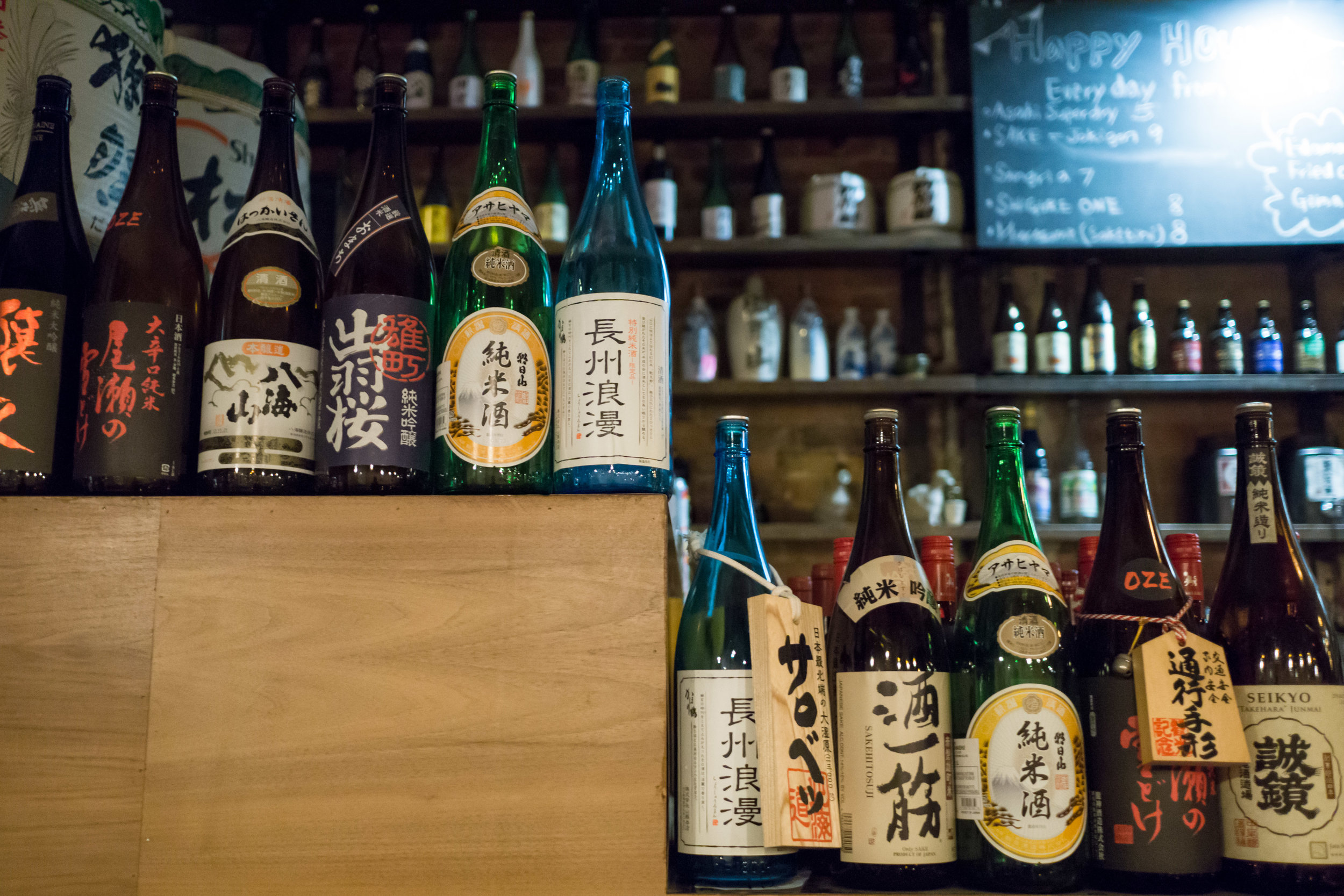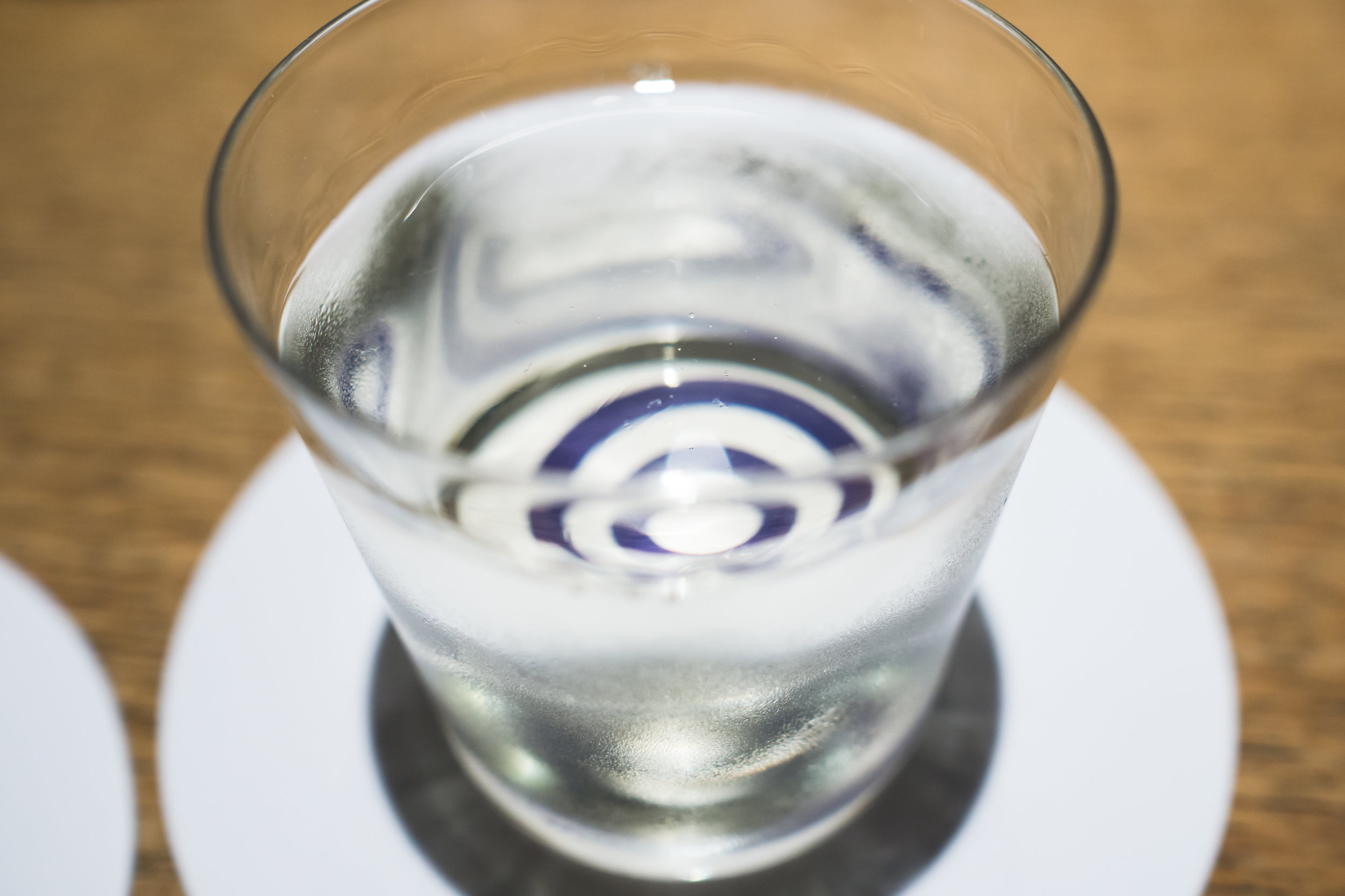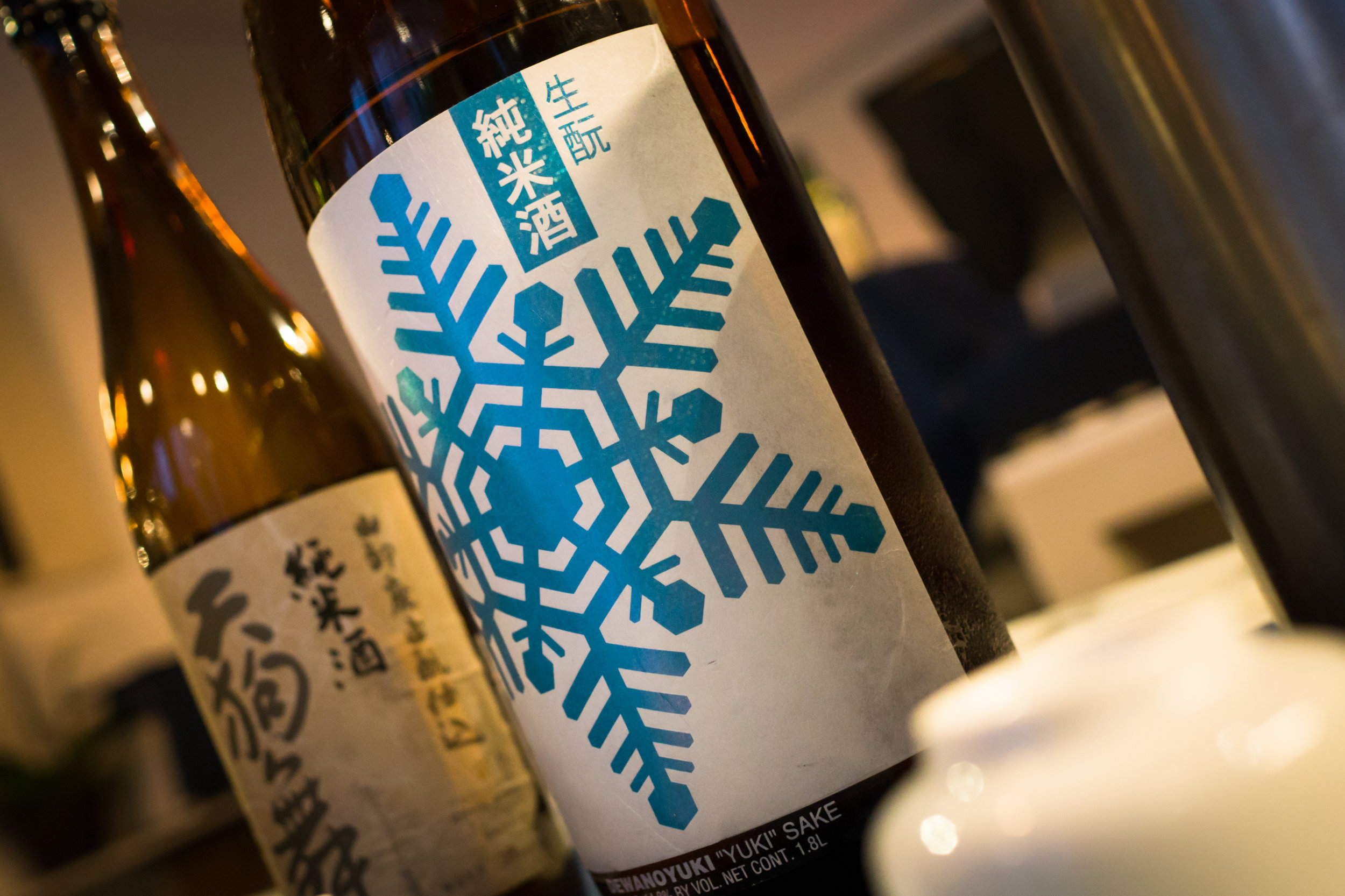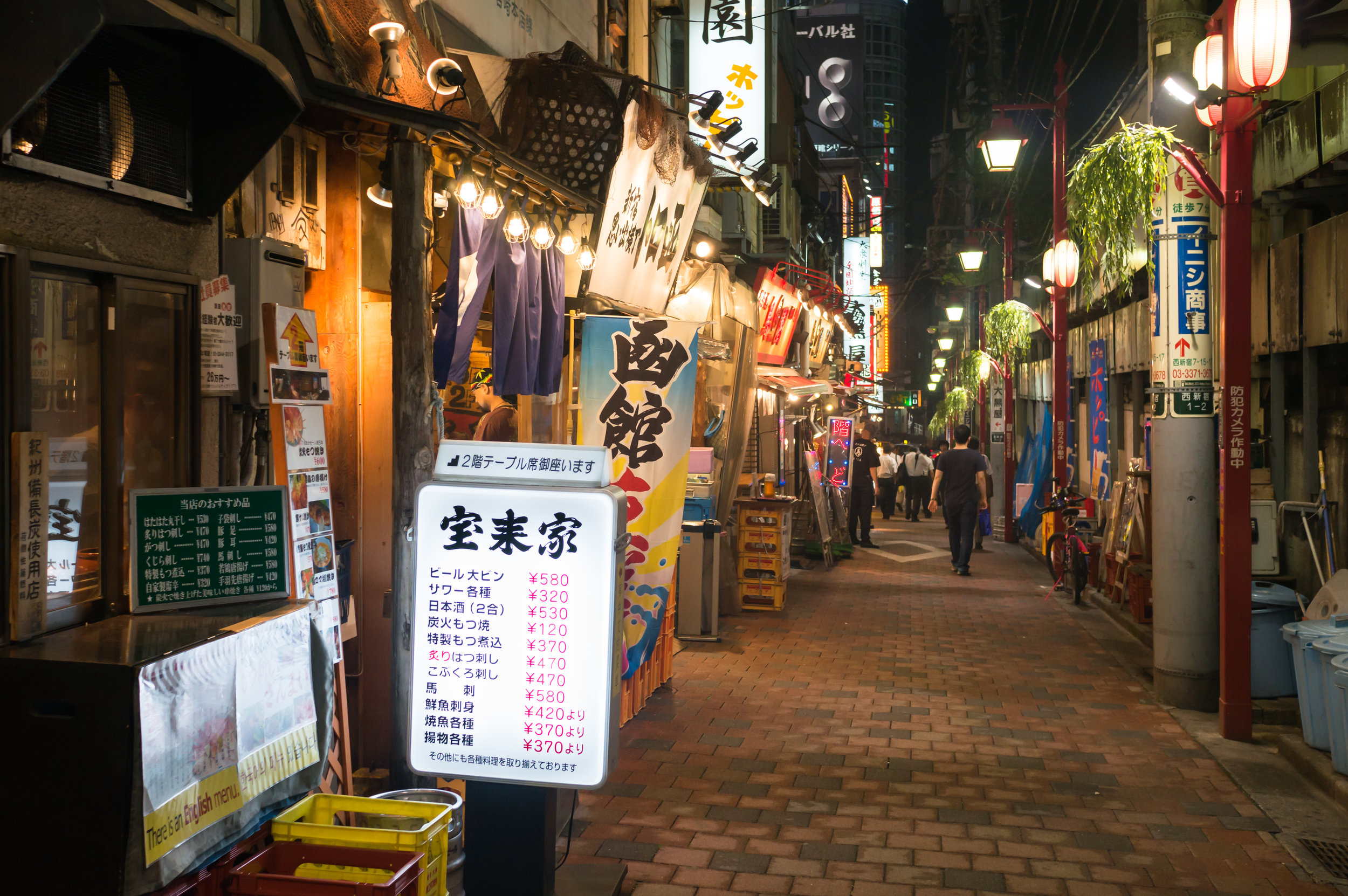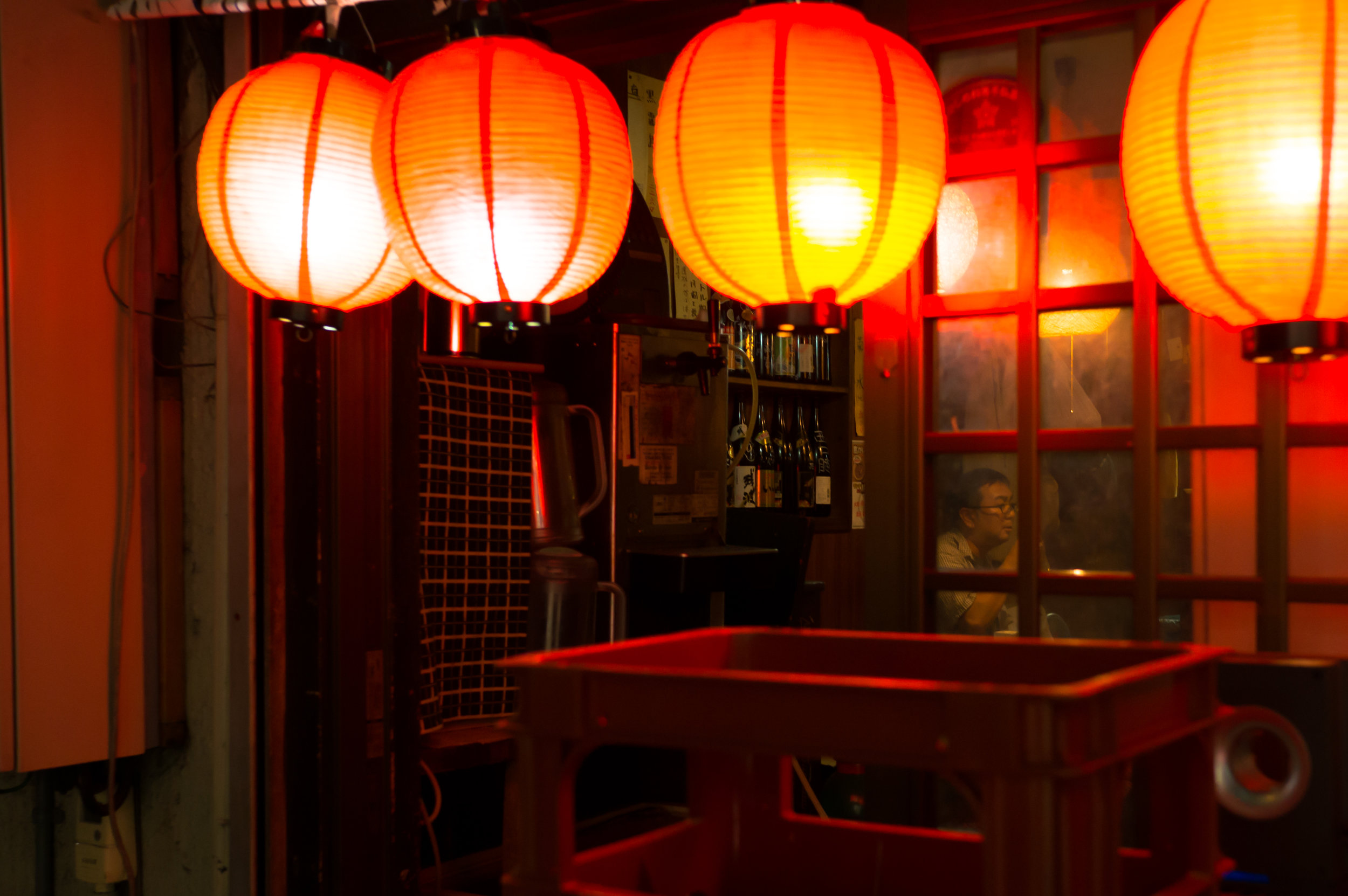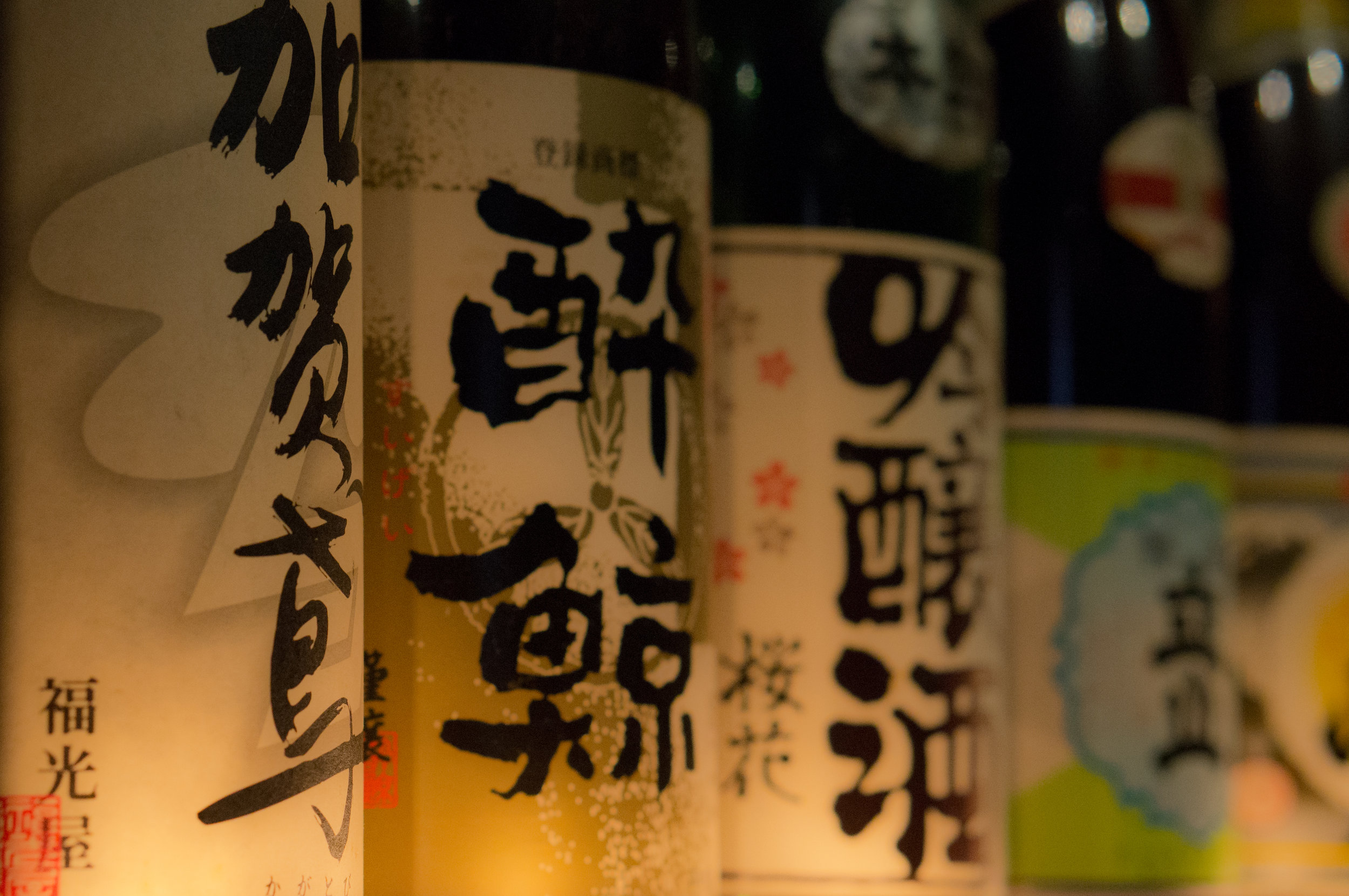Sake Bar Hagi 46
Sake Bar Hagi was the first izakaya that i had ever visited. Please not that this paradoxically happened after my first trip to Japan. Hagi became a nearly weekly ritual for my group of friends and was instrumental in my discovery and exploration of sake.
I recently learned about Hagi’s newly opened Hell’s Kitchen location and decided to pay them a visit armed with my new Sony A7II. This was my first time shooting full frame and, well, it shows. I feel as if I had gotten pretty good driving a Toyoda and someone just handed me the keys to a Ferrari. This is going to take some getting used to.
Kurand Sake Market, Ikebukuro, Tokyo, Japan, May 2015
If there’s going to be a bright future for Japanese Sake, places like Kurand Sake Market are going to be the ones who help make it happen.
Your humble narrator pouring some very interesting sake
Located in Ikebuko, (Note: they recently opened a new location in Asakusa that we have not yet visited) Kurand is an all-you-can-drink standing sake bar. 3000 yen (before tax) will get you access to their selection of more than 100 brews for as long as you can remain upright and/or coherent. Upon entrance, you’ll be given a checklist (ok, maybe it’s more of a menu and our use of the term “checklist” is an indication of editorial bias) of the day’s selections, complete with regional origin and flavor profile. Kurand’s stated goal is to promote smaller, lesser known breweries, so you’re not likely to find heavy hitters like Dassai or Hakkaisan here. In fact, if you’re a clueless gaijin like me, it’s likely that you’ll never have heard of any of the breweries being represented, and that’s probably the best part.
Once you start tasting, its not at all unusual to encounter staff or even other guests eager to talk about the various selections, their personal favorites, and as the night draws on, your interest in post-drinks karaoke. In an effort to keep their clientele upright, Kurand has a very strict water policy. Every 30 minutes, all guests are required to put down their sake (and Kurand staff will get on the PA and let everyone know when it’s time), fill a glass of water (and they do keep pitchers of water filled at your table at all times), and have a grand toast (of water). I want to say that this was the result of excellent planning, but i suspect it’s more a reaction to some tragic incidents in the past.
One thing you should know going in, while Kurand does have a small collection of food items available, the expectation at Kurand is that you bring your own food. We saw groups of people enjoying tables full of dishes, practical sake-themed picnics. Unprepared parties (like ours) could find themselves attempting to subsist on chips and pastries from the local convenience Store. Not that there’s anything wrong with that.
All of the bottles have color coded tags indicating flavor profile
When i started visiting Tokyo years ago, it often seemed to me like sake was an "Old Man’s Game.” The 20s and 30s crowd were all drinking beer and the majority of people I encountered drinking sake were elderly men in suits, which struck me as being somewhat unsustainable. Despite the loads of sake organized in fantastically efficient ways and an excellent and knowledgeable staff, the thing that impressed me the most about Kurand was the crowd. There were friends, couples, coworkers, both young and old, male and female, all eating, drinking, and being oh, so merry!
Note: Kurand is very busy these days, so if you intend to go, it’s probably a really good idea to make a reservation at their website. Lately, Kurand has also been promoting foreigner-focused “Sake Exchange Tokyo” events, featuring guided tastings.
Ishii / Yougaku Ishii, Shinbashi, Tokyo, Japan, May 2015
A funny thing happened when we were in Shinbashi.
We were there mainly to visit an Izakaya called Ishii. The place came very highly recommended and was billed as “a real sake lover’s izakaya” tucked away in one of Shinbashi’s many alleys.
The evening started innocent enough, with us using our meager command of the Japanese language to muddle through and order sake that appealed to our tastes. It’s a tricky proposition, but we’ve gotten reasonably good at it.
I started the night with an unrecognized bottle of Dewazakura Junmai Ginjo. I’ve found that it’s usually a good idea to start off the evening with a familiar brand so that the bartender knows what sort of sake i’m into. It serves as a good baseline for recommendations. The owner, Hideyuki Ishii, quickly nailed down my tastes and was introducing me to fantastic new brews in no time.
Ishii lived up to the billing of a “sake lover’s Izakaya” and then some. It was easily one of the best experiences we had on our entire trip, and just when we thought it couldn’t get any better, Ishii-san asked us a very surprising question.
“Do you like the 80s?”
In general, this is sort of an unusual question to be asked out of the blue, its somewhat more unusual when you’re on the other side of the world and have been drinking sake for two hours.
But… when the proprietor of an outstanding sake bar asks you if you’re into the 80s, you say “Yes.”
And this is when Ishii-san informed us that he ran a second bar, not very far away, with an even more robust sake selection, and a western 1980s music theme. Once I picked my jaw up from the floor we were off to our second destination, Yougaku Ishii.
Yes, ladies and gentlemen, we found an 80s sake bar in Tokyo, and it was amazing.
Yougaku Ishii is quite a bit larger then it’s more traditional cousin. The walls are adorned with 12" LPs and feature albums like Duran Duran’s Hungry like the Wolf and the Original Ghostbuster’s soundtrack (yes, really!). If the decor somehow doesn’t do the job of getting you into the 80s mood, then the blaring tunes should let you know what’s up. The music here is primarily done by request, with patrons encouraged to select their favorite tracks out of a Karaoke-style song book that is a whose who of classics from the era, complete with music videos.
I’ve gotten the feeling that there’s been a real effort in recent times to make sake more accessible and “cool” to new people. Places like Yougaku Ishii and Kurand Sake Market (which i’ll post about soon!) tend to have younger crowds then what i’m used to seeing in your typical Tokyo Izakaya. I hope places like these will help
I cannot recommend Ishii and Yogaku Ishii enough, they should be a staple of any sake enthusiast’s trip to Tokyo. Make a note though, both establishments are closed on weekends!
Ishii | Shimbashi 2-15-10, Ishibashi Bldg 1F Tokyo, Minato-ku
Yougaku Ishii | Yubinbango105-0004, Tokyo, Minato-ku, Shinbashi 2-10-1 3F
Sake Bar Shigure, New York City, April, 2015
Sake Bar Shigure came very highly recommended by just about everyone I had spoken to about it. This Tribeca sake bar’s atmosphere is very relaxed with light jazz filling its exposed brick walls. Shigure features around 40 types of sake, as well as a generous selection of shochu, whiskey and beer. Among their sake selections I found some very hard to find brews such as Hayashi Honten’s Hyakujuro Junmai and Yamahai Junmai Daiginjo (a personal favorite of mine that I almost never see in New York). We found the staff to be very knowledgeable, enthusiastic, and eager to give recommendations.
Hasegawa Saketen - Tokyo, Japan, May 2014
I have a special love for Hasegawa Saketen, a chain of sake retailers whose shops do double duty as sake retailers and sake bars. The expectation is that you’ll try a glass or two of a and then opt to buy a bottle to take home. I find this concept to be especially interesting since retail and on-premises consumption licences are mutually exclusive in New York.
The shots below are from their Tokyo Station and Harajuku locations. Hasaegawa Saketen also has locations in Kameido, Azabujuban, Futagotamagawa, Tokyo Skytree, and the Tokyo Palace Hotel in Chiyoda.
Sake Cafe Shinbashi 49, New York City, October 2014
Cafe 49 is attached to Shinbashi, a rather well known Japanese restaurant in midtown Manhattan. For a long time, the cafe served as a casual lunch spot to pick up bentos and sushi, along with a bottle of and a bottle of oolong tea for lunch. Recently though, they’ve expanded operations by transforming it into happy hour sake and izakaya-style snack bar after 5:30 under the name Sake Cafe Shinbashi 49.
The idea at Sake Cafe Shinbashi 49 is to invoke the idea of a Japanese tachinomi (standing) bar. When you walk in, you are greeted by a large, and from my perspective at least, extremely inviting table filled with bottles on ice, prepared for tastings. It’s important to note that while seating is also available in case you would rather not have the tachinomi experience.
Their sake selection includes many familiar selections like Ohyama and Ichinokura along with an eclectic assortment of additional bottles, many of which are difficult to find in New York, including some fantastic seasonal namas. The sommelier, Hiromi Kiyama and her staff are excellent hosts and quite enthusiastic about helping their guests learn more about sake. though they have only been open for a short period, they’ve already expanded their menu to include an assortment of Japanese craft beers, a market which has absolutely exploded in japan over recent years.
I’ve found Sake Cafe Shinbashi 49 to be excellent at what it sets out to do, it’s great place to enjoy a quiet, relaxing drink before heading home after a long day at work.
Return to Nihonshu Stand Moto (スタンド酛), Shunjuku, Tokyo, Japan, May 2014
Tonight we have another batch of photos from Shinjuku’s excellent standing bar, Moto. Most everything we tried there during out three visits to this bar were outstanding, one thing that stood out from our final visit was Dokuro, a sake that’s actually blackened though the use of bamboo charcoal.
Tokyo Miscellany, Tokyo, Japan, May 2014
Not every trip to a bar results in a set of shots that are good enough for a full post. Sometimes i’ll go someplace and, while I may end up with a photo or two that I really like, I won’t have enough to stand on their own. This leads us to posts like these, where I share a miscellaneous collection of shots from a series of locations. This set includes a shot of some Dassai bottles that I really liked as well as contributions from trips to Izakaya Yodareya in Shibuya, Izakaya Sangendou in Nishi-Shinjuku, and finally, Game Bar A-Button in Akihabara.
Sake Bar Ganko Oyaji 銘酒居酒屋 頑固おやじ, Shinjuku, Tokyo, Japan, May 2014
Ganko Oyaji is a small sake bar in Shinjuku which prides itself on getting rare and interesting sake early and often. We’re no strangers to this place, having first come across it during our 2013 trip, when we probably tried just a bit too much! With their impressive array of kikisake sets and enthusiastic staff, I highly recommend this place to any traveler who is serious about sake.
Amanogawa, Keio Plaza Hotel, Shinjuku, Tokyo, May 2014
I’m no stranger to Shinjuku’s very impressive Keio Plaza Hotel, having stayed there a handful of times over the years. Tucked away within Japanese Restaurant Kagari on one of the hotel’s lower levels lies Sake Bar Amanogawa. It’s a quiet bar with an impressive collection of ginjo-shu, some small plates for tasting sets, and an a very helpful staff. I may not find myself staying at the Keio as often these days, but I make sure to visit Amanogawa every chance I get.
Nihonshu Stand Moto (スタンド酛), Shunjuku, Tokyo, Japan, May 2014
We’re back from Tokyo and life has finally slowed down to the point where I can catch up with posting again! Without a doubt, the highlight of this year’s Tokyo trip was discovering Nihonshu Stand Moto, Moto came to my attention through some articles Melinda Joe had written on interesting places to try new sake and since this bar was situated dangerously close to my hotel in Shinjuku, I had to pay it a visit… or perhaps three…
Tokyo Photowalk, October 2013
While not strictly sake photos, I decided to revisit a few photos that I had taken while strolling around Shinjuku one night last October. If I remember correctly, we started our stroll in the northern part of Nishishinjuku and eventually ended up in Omoide Yokocho, which has absolutely no shortage of sake and just about anything you can eat on a stick, highly recommended.
Hi-Collar, New York City, April 2014
I recently upgraded to the new Sony A6000 and I’ve been pleased with the results so far. I had previously been making use of the NEX-6 (i’m a sucker for mirrorless) and was really looking forward to the upgraded sensor and autofocus features that the new unit promised. For a test run, we took it down to Hi-Collar for a round of photos, a few glasses of Azuma Rikishi Junmai Ginjo, one very interesting looking dessert, and a special appearance by new favorite, Kudoki Jozu Junmai Ginjo.
Sakamai, New York, April 2014
Daiginjo Monday is a new weekly event at Sakamai. Each week, three interesting, not typically menu item Daiginjos are selected to be a part of the tasting. This particular week featured an interesting, if eclectic selection. Notable was the Tanatogawa Dakuryu Junmai Daiginjo Spakling Nigori Nama (yes, it it all of those things, all at once). I found that the notes from the nama interacted with the texture of the nigori in a very interesting way, while the overall taste was vaguely sour in nature. Rounding out the set was the very familiar and fantstic Amabuki Daiginjo and a rare bottle of the rather full bodied Kubota Senshin. Daiginjo Mondays are a great way for people to try new, ultra premium sake and I highly recommend making a trip down to Sakamai for the occasion.
New York Sake Photowalk, March 2014
Blessed by a sudden (and unfortunately brief) reprieve from what had been an absolutely brutal winter, we went for a stroll around Manhattan in mid March and took a few photos along the way. We started our travels with a glass of Shinpaku at the recently opened Izakaya Lucky Cat in midtown. Lucky Cat’s sake menu is quite interesting, and their food menu features some interesting western influenced takes on izakaya standbys, as well as a selection of surprisingly good ramen options. We also made stops the very sake friendly and always excellent Tomi Jazz, legendary Sake Bar Hagi, and the outstanding bar at midtown’s Soba Totto.
Hi-Collar, New York City, March 2014
Ever since Hi-Collar opened its doors last summer, my friends and I have been very frequent guests. With their impressive sake selection and a knowledgeable, enthusiastic staff; this bar is an extraordinary place to experience new sake. A few months ago, they were among the first to receive Nanbu Bijin’s newest export, Shinpaku Junmai Daiginjo. Shinpaku is easily one of the best Junmai Daiginjos available at its price point and its fresh taste quickly made it a personal favorite. During this visit, i also had the opportunity to try Kudoki Jozu Junmai Ginjo. The Kudoki was particularly memorable for it’s vanilla notes and very clean finish.
Imozo Bar (芋蔵), Akihabara, Tokyo, Japan, October, 2012
While offering far more Shochu then Sake, Imozo, located in Akihabara’s simply massive Yodobashi Camera, offers a relatively peaceful oasis from the chaos that sometimes arises inside of the electronics giant’s flagship store.
Sakamai, New York, March, 2014
Sakamai is a “sake lounge” located in New York’s Lower East Side featuring a very respectable sake selection as well as a nice array of shochu and an assortment of signature cocktails. I’ve had the pleasure of visiting Sakamai a few times in the past year and have consistently been been pleased with their offerings as well as level of service.
General Manager, Jaime Graves shows off a bottle of Isojiman Omachi Tokubetsu Junmai, a very pleasant surprise.
Preparing Aoi, Sakamai’s Gibson martini.
Daiginjo tasting set featuring Kagatobi, Tenryo, and Nanbu Bijin.
Sakamai
157 Ludlow St
New York, NY 10002
telephone: 646.590.0684
email: info@sakamai.com
Twitter: @sakamai
Nomidokoro Hiroshi (呑処 ひろし), Akihabara, Tokyo, Japan, October, 2012
You see, even when visiting Tokyo’s fabled Electric Town, Akihabara, one works up a thirst. While the local establishments tend to be more kitschy-otaku than sake-lover’s paradise, we found this small izakaya while taking a break from gashapon hunting and were pleasantly surprised by their sake selection and had found a very nice place to decompress.











